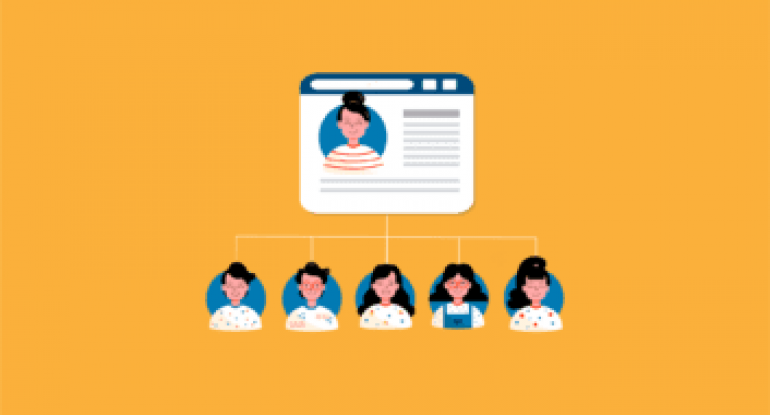In the game of hockey, a shot that is deflected wide or blocked by an opponent does not count as a shot on goal; it is recorded as a blocked shot.
The player who blocks the shot is credited with a ‘blocked shot’, while the player who took the shot is credited with an ‘attempt blocked’.
No goals are given in this scenario Shots that sail wide or high of the net, and shots that hit the goalpost or crossbar, are not counted as shots on goal; they are counted as ‘missed shots’.
So in Hockey, accuracy and precision are very important when passing the ball to your teammate or shooting for the goalpost.
Because a little towards the wrong angle and the ball could go in a completely different direction to the opponent or hit the crossbar. And become a missed shot.
Like a Hockey game, audience targeting is necessary to keep your message from deflecting or hitting the wrong marketing.
When your messages are not properly targeted, chances are they will end up as missed shots or over-the-bar shots.
With over 4.9 billion people online, It is only through audience targeting that you are sure of hitting the bull’s eye with your marketing efforts.
In this article, I will stand on the tall shoulders of digital marketing industry leaders and take you through a defined path on hands-on strategies to embrace as you craft content for your digital marketing.
If you’re not an expert marketer yourself, then this post is for you.
However, before we dive deeper into the journey, there is a need to inform you my co-traveler that data management is crucial to audience targeting.
Table of Contents
ToggleWhat Is Data Management?
Data management is the practice of collecting, keeping, and using data securely, efficiently, and cost-effectively.
And this is where a data management platform comes in.
What Is a Data Management Platform In Digital Marketing?
It is a software platform used for collecting and managing data. It is a comprehensive solution that combines functionalities of for example a data lake, data warehouse, or data hub for business intelligence purposes.
A Data Management Platform enables marketers to use data from various sources to manage the customer journey more efficiently and automatically optimize the results of their digital marketing campaigns.


Through data management, you will be able to process, organize and prepare your information, offering a much clearer picture and a better understanding of your audience, strategies, and efforts.
It is at this stage of the planning that you analyze data about a user’s past clicks, downloads, preferences, and engagements.
A DMP records how users interact with an ad creative and evaluate which offers get the most positive response. This information is highly important for the strategic optimization of your digital marketing campaign.
So once data collection is done, the next phase would be to decide who fits into the message you intend to push out. This is the birth ground for audience targeting.
To reach your target audience, you must first define your target audience. Identify the subgroups within the target audience to deliver more tailored messaging for stronger connections.
The subgroups can be based on demographics such as geographic location, gender identity, age, ethnicity, income, or level of formal education.
Now you are done identifying your target audience, the next phase is to worry about the channel. What media type is most suitable for reaching the target audience?
Make sure you have the answer to that before moving on to the next phase.
Once you’ve figured out how you’re going to collect, analyze, and manage your data, you can start improving on your audience targeting campaign.
Audience Targeting Strategies from Digital Experts
#1. Focus on audience preferences
Examine their priorities, engagement habits, buying behaviors, favored pricing, social media activity, and other details of your current audience for commonness. Then, use this data to inform or refresh your outreach.
Finding your target audience preferences will help you to create a tone of voice that speaks to them.
Essentially, a target audience analysis is supposed to give you direction for your marketing and ensure more consistency in your messaging, so you can build stronger relationships with customers using their preferences.
#2. Start with what you know
“Start with what you know to learn what you don’t know.
Start with where you’re at to get to where you want to go.” That’s a motto by Students at the Center (SAC).
Now you know the preferences and tastes of your target audience. You know what motivates them; it’s time to formulate content that meets those preferences.
From there, you can target them by producing content that is informative, readable, provides value, and visually appealing. Content that resonates with their preferences.
How to resonate with your audience? You resonate with consumers by connecting with their preferences.
You resonate by connecting on their level. You resonate by giving information and not just staging a sales pitch.
You resonate by discussing benefits rather than features. You resonate with your target audience when you provide value.
#3. Spy on Competitors
As marketers, you must keep your customers close but your competitors closer. When you are segmenting out specific audiences to target in your campaigns, you want to know what’s working ( what`s not working) for your competitors.
You want to know who patronizes them, you want to know more. And the only way to do that is by spying on them. Marketers can learn a lot by spying on competitors to see who they are commonly selling to, and how they go about it.
Are they using online or offline channels for marketing? The answers here will help in audience targeting
Seeing who your competitors are working with and what’s working for them gives your clear insights on who exactly you should be targeting and how and why.
There may be potential customers that are a good fit for your brand but unknowingly you’ve been overlooking them until you saw your competitor leveraging the ignored spot.
#4. Leverage Existing Customers
Find out from your existing customers what motivated them to into keying or become your brand users. They can explain what convinced them to sign on as customers.
Having this information gives marketers a better understanding of exactly where to put focus to fish in new customers.


#5. Leverage Search Intent
What questions are your potential customers asking? When you know their search queries in search engines, you can customize your marketing messaging to better reach those individuals and increase the likelihood that they will take the desired action.
Knowing your target audience gives you an edge to predict all their stages in your marketing journey, and prepares you to meet them at each level, for a successful conversion.
You not only have a predictive sales cycle, but you also build a tribe of loyal customers, whose lives are enhanced through your products. I mean, how will you want them to be into you if you don’t know what their ultimate goals are.
Your potential clients come online with search intent and you have to find out what the intent is, know the intent, and match the intent with the right content.
You can only be found in your website content appeals and matches their needs.
#6. Conduct Market Research and Identify Industry Trends
A market trend analysis grants insights on performance, identifying areas of sufficient business performance, along with those that aren’t faring well. Thus, it helps businesses on the decision-making front, providing insights that boost long-term strategy and helping businesses avoid future setbacks.
A good way to learn this is through engaging on social or distributing customer surveys.
What’s trending in your industry and in the eyes of your buyer?
By keeping up with trends, you’ll constantly be learning new tools, new events to participate in, and new ways to be efficient.
By understanding the types of market trends, you can distinguish what makes sense for your potential customers and this helps you tailor content that resonates with what makes sense to them.
#7. Create a Buyer Persona
A buyer persona represents your ideal customer. It’s a semi-fictional representation of your best potential buyer based on market research and real data about your existing customers. It’s also called an audience persona, a marketing persona, or a customer persona.
Creating a persona to represent each segment will prepare you to build out the features you need to reach the most valuable segments of your target audience.
Your Personas will go further to allow you to examine how each segment within your target audience can be most effectively reached.
It is recommended that you should have roughly 3-5 personas and their identified characteristics.
#8. Identify Who Your Target Audience Isn’t
The essence of audience targeting is to avoid chasing shadows. chasing after a crowd instead of customers, as you will be hurting your marketing efforts, when you go chasing everybody online.
The purpose of audience targeting is to decide how you will sell your products or services to consumers. Rather than assuming your product is perfect for everyone.
#9. Leverage Google Analytics
Google Analytics offers extensive data about the users visiting your site. Google Analytics is designed to reach potential customers while they’re actively browsing, researching, or comparing the types of products you sell.
Connect with those most interested in what you have to offer, using precise segments that classify users based on their demonstrated in-market behavior and purchase intent.


#10. Set Up Conversion Tracking in Google Analytics
Conversions in Google Analytics are key actions website users take which convert them into customers, leads, or subscribers.
Analyzing conversions can tell you whether visitors are engaging with your marketing efforts and successfully moving through the different steps in the sales funnel.
The good thing is that you are not only limited to Audience Data, but you can also find out which channels perform the best, which pages your real customers went to and stayed on the page the longest, which page they usually convert on, etc. through Acquisition, platforms the audience have visited before the final conversion and Behavior reports.”
Conclusion
The buying process is in the hands of a large, scattered, and heterogeneous customer, the digital market is also scattered.
To effectively reach potential customer, marketers must create targeted messages for these customers if they want to be the ones to grab their attention among a pool of marketers battling for the same attention.
Targeting the right audiences helps marketers ensure that their content is only being shown to audiences that are interested in purchasing their products. Thus, maximizing the marketers’ ad spending.
When marketers have a comprehensive understanding of their ideal buyer, they can make more informed decisions about media, messaging, and timing.
This article has comprehensively covered audience targeting and strategies you can take to find your target audience.
You will be hurting your marketing efforts when you choose to chase every audience in the market.
Now that you know the benefits of knowing your target market, I want this article to be your springboard to starting your audience targeting and starting on sound footing









